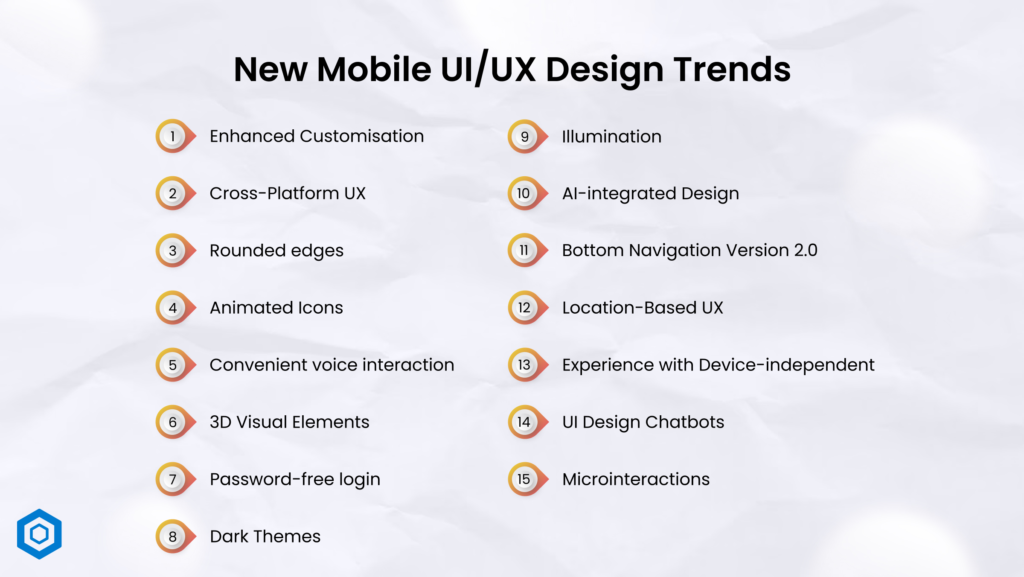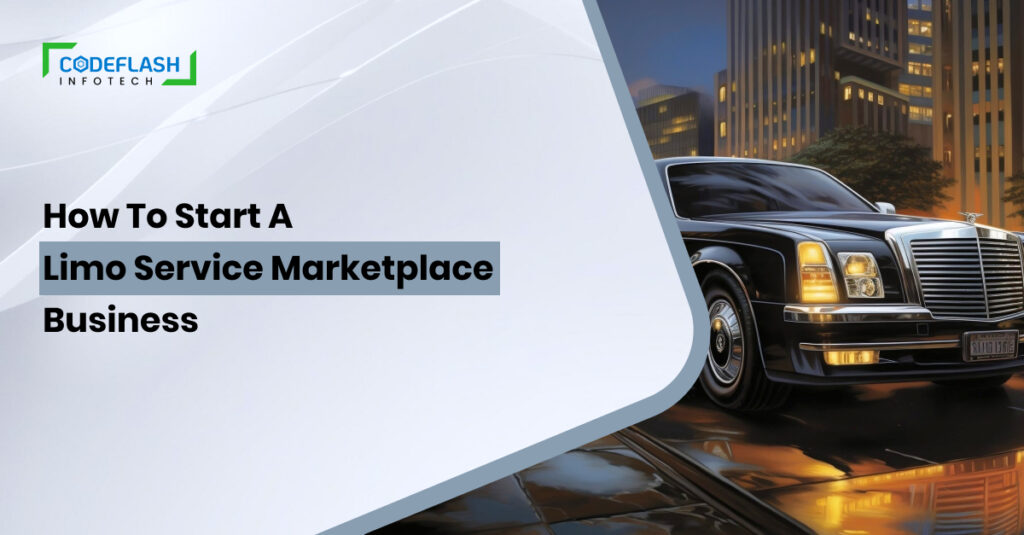
Top UI_UX Design Trends for Enhancing User Experiences
23 FEBRUARY
Among the most intriguing Top UI_UX Design Trends concepts for 2024 are buttonless user interfaces, data storytelling, scrollytelling, and personalization. Our research shows a noteworthy UI/UX Design Trend toward more extensive displays. Instagram has responded to this rising demand by enhancing its desktop experience. Create excellent, working prototypes to test your UI design concepts. To discover the advanced capabilities, register for a free trial now! Build advanced prototypes: Utilise Auto Layout, States, Variables, and more to create better products. The Top UI_UX Design Trends for 2024 will be examined in this essay, including topics like AI integration, sustainability, and responsive design.

Top UI_UX Design Trends In 2024
The following list of the hottest mobile UI/UX design trends will soar in 2024, lowering bounce rates and increasing conversion rates.
- Enhanced Customisation
Personalization of mobile apps may gain more excellent traction this year. Mobile App development requires a more and more customized user experience. This customization is effortless, thanks to artificial intelligence and machine learning. Use streaming platforms like SoundCloud or YouTube, where artificial intelligence evaluates user preferences to propose songs. Additionally, applications for fitness and bucket lists provide enhanced customization for all users. - Cross-Platform UX
Most of you are familiar with cross-platform user experience (UX), but in 2024, it will reach new heights. We revealed last year that desktop programs such as Instagram had been updated to use large-screen displays better. Conversely, YouTube adopted a story style comparable to TikTok, which makes it more appropriate for mobile devices. Personalization of cross-platform experiences is an emerging trend. Apps aim to remain current and provide users with engaging material to entice them to stay longer. - Rounded edges
Another trend that sprang from contemporary smartphone technology is this one. The flagship devices for iOS and Android both have rounded edges. Because the UI design of a device mirrors its curved corners, all mobile websites and applications have a rounded look and feel. It has a favorable effect on UI/UX Design Trends. Round corners facilitate easier data processing and are easier on the eyes. - Animated Icons
Thanks to the official introduction of animated icons in iOS 17, your Apple apps will now have life added to them. It’s time to add movement to your visual components, whether you like solid icons or prefer the sophistication of outline icons. Prepare to infuse your UI with life using animated icons that perfectly capture the vibrant essence of iOS 17. - Convenient voice interaction
Google Assistant, which is powered by artificial intelligence; Bixby, the intelligent assistant from Samsung; Alexa, the virtual assistant from Amazon; and Siri, the voice-activated personal assistant from Apple, all dictate the terms of UX design trends.
Voice-activated apps are constantly making our lives easier since they ensure a customized user experience, provide accurate and quick query responses, and are more practicable. - 3D Visual Elements
Are you attempting to improve brand awareness, create a VR app’s user experience, or display complex data? Add 3D components to your writing! By 2024, these interfaces will be widely used. Designers may use 3D components to provide depth and authenticity to attract users’ attention. Although the source of the trend is unknown, several of the designs appear to have been made with Midjourney, another AI program. - password-free login:
Keeping track of all the passwords for the several apps we use daily is challenging. UI/UX Design Trends will see a rise in password-free logins. In particular mobile applications, password-free login is already in use. Think of biometric authentication, such as face or fingerprint recognition! Furthermore, one-time temporary passwords, OTPs, and sign-in URLs (Medium) (eBay). - Dark Themes
A low-light user interface with primarily dark surfaces is called a dark theme. Two key benefits of dark themes for user experience are preserving battery life using fewer light pixels and alleviating eye strain by adjusting the screen’s brightness to suit ambient - illumination
Liquid Swipe and Buttonless Design Actual, tactile buttons are no longer seen on all smartphones nowadays. More screen real estate allows product designers to provide consumers with more information. Instead of using digital buttons, motions are used, and the information is the only emphasis. The liquid swiping effect elevates the utilization of gestures. - AI-integrated Design
Artificial intelligence is finding its way into the design process, helping with anything from complicated UX design decisions to research plan construction and brainstorming design solutions. ChatGPT has swept over most sectors, and the design sector is no exception.
In 2024, designers offered each other hints, design tools such as Framer, and other integrated AI processes to assist users in creating a first user interface (UI) before iterating on it. The AI-integrated Design will be able to automate most repetitive jobs. Let’s focus our efforts on resolving challenging issues. - Bottom Navigation Version 2.0
The days of tiny displays on mobile phones are long gone. Larger screens on modern smartphones allow them to carry more material and make multitasking a breeze. Larger displays, however, also provide additional challenges since they push the interactive components of the design far from the thumb’s natural range of motion. Key navigation icons are positioned near the bottom of more applications as it is harder to reach the top of the screen. As a result, the bottom navigation bar—which gives users instant access to fundamental app features—became the industry standard for app developers. They are already available in a few smartphone applications. With a swipe-up motion, these bottom sheets expand to provide more alternatives. - Location-Based UX
Location-based experiences are becoming more and more popular. Next year, those applications that provide it will be the pinnacle of user-centric Design as consumers begin to appreciate easy-to-use and highly tailored experiences. Imagine receiving recommendations for public transportation that better fit your needs and way of life. The future of location-based experiences is largely being shaped by artificial intelligence. It aids in the prediction of user actions and behaviors. Product teams may utilize AI to predict user preferences and provide straightforward recommendations for related locations, activities, or services—often before consumers proactively look for them. - Experience with Device-independent.
Device proliferation: 6.58 per person. User journey spans devices. Shift to device-agnostic design for seamless UX across platforms. - UI Design Chatbots
Understand diverse languages and emotions in these new Top UI_UX Design Trends. Enhance UX with avatars, brand voice, typing indicators, and response buttons with varied interaction options. - Microinteractions
User interactions with digital products, known as micro-interactions, can be little yet meaningful. They may be seen in various ways, such as the tap animation that appears when a smartphone button is pressed. These micro-interactions improve UX design trends by offering feedback, signaling task status, and bringing a touch of fun and engagement. By integrating well-crafted micro-interactions, designers may craft a more intuitive and fulfilling user experience that engages people with the product.
Conclusion
In conclusion,
Several trends expected to reshape user experiences and aesthetics in 2024 will propel the exciting evolution of mobile app UI/UX Design Trends. Designers and UI/UX design companies are embracing innovation to produce more user-friendly and captivating mobile interfaces, from the smooth integration of augmented reality aspects to the emergence of gesture-based interactions. Bold typeface and dark mode have become widely used, emphasizing accessibility and equality while guaranteeing a user-friendly experience. The combination of vivid, immersive graphics with clean simplicity promises to take mobile app interactions to new heights as we enter the digital future. App designers have an exciting canvas ahead of them in 2024 when user-centric principles, functionality, and creativity will come together to form the end and influence the upcoming wave of mobile experiences. Design trends serve users. Evaluate for value. They are excited about movements enhancing user experiences. Share your favorites!
Hire UI/UX Designers on this trend to ensure your mobile app stays ahead of the curve and delivers exceptional user experiences.
FAQs
1. UI design: what is it?
UI: The mobile app’s visual layout—buttons, text, sliders—facilitates user interaction.
2. UX design: what is it?
UX: Shapes app experiences. Focus on interaction for better, relevant user encounters.
3. How are UI and UX different from one another?
UI: Appearance and function. UX: Holistic user experience.
4. Why is UI/UX design so important in mobile applications?
A vital component of developing mobile apps is UI/UX design. It helps to win the user’s confidence and improves customer satisfaction, and last, it helps increase the total number of mobile app users.





